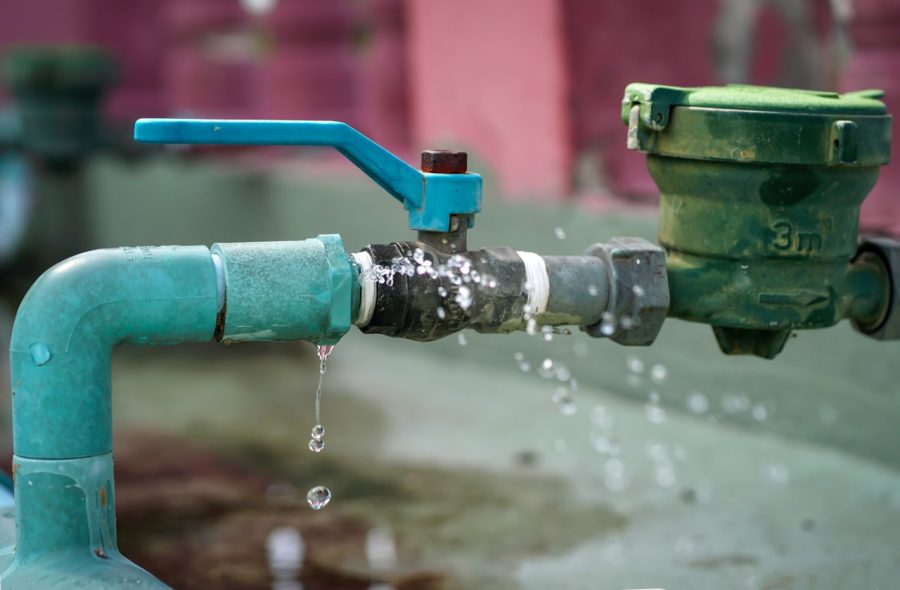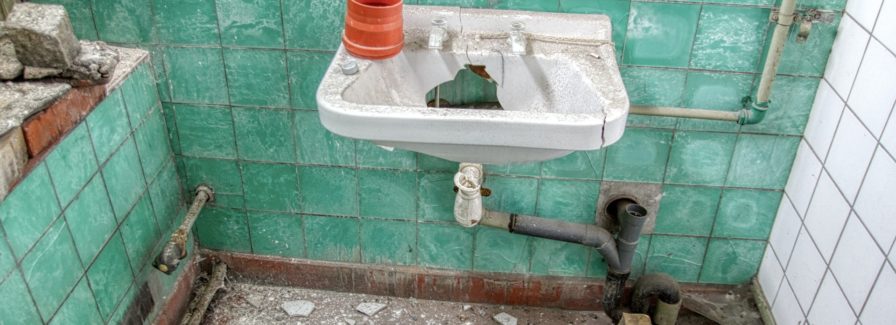Key Tips for Handling Plumbing in Older Homes
Key Tips for Handling Plumbing in Older Homes
Blog Article
Do you find yourself on the lookout for answers involving Plumbing Problems In Old Homes?

Older homes often include appeal, character, and background, however they can also bring a host of pipes problems. Whether you're dealing with maturing pipelines, low tide pressure, or leakages, knowing just how to resolve these common issues is essential to keeping a secure and functional home. In this overview, we'll discover the normal pipes obstacles encountered by older homes and supply sensible services to maintain your plumbing in leading form.
Recognizing Usual Plumbing Problems
Aging Pipelines
Among the most typical problems in older homes is maturing pipelines. Relying on the age in which your home was constructed, the pipelines could be made from products that have actually degraded with time, such as galvanized steel, cast iron, or perhaps lead. These materials can wear away, end up being fragile, or create leakages, resulting in water damages and potential carcinogen.
Water Quality Testing
Older pipes can influence the top quality of your water. Conduct a water top quality test to look for impurities such as lead, rust, or various other impurities that may be introduced by aging pipes.
Solutions for Usual Plumbing Issues
Replacing Aging Pipes
If your home has old, degrading pipes, take into consideration changing them with modern materials like copper or PEX. This can be a substantial investment, yet it will certainly avoid future problems and boost the safety and integrity of your pipes system.
Taking Care Of Low Tide Stress
To fix low water stress, beginning by cleansing or changing old fixtures and getting rid of mineral buildup in the pipes. If the trouble persists, it might be necessary to replace sections of corroded pipelines.
Repairing and Replacing Dripping Pipelines
For little leakages, you can make use of pipeline clamps or epoxy putty as a temporary fix. Nevertheless, it's ideal to change leaking pipes totally to avoid more damages.
Upgrading Fixtures
Updating old components to modern, water-efficient designs can boost your home's pipes performance and minimize water usage. Try to find components with the WaterSense tag for the best effectiveness.
Dealing with Pipeline Rust
If your pipelines are corroded, changing them with corrosion-resistant products like copper, PVC, or PEX is the very best remedy. Regular evaluations and water top quality maintenance can help avoid additionally deterioration.
Low Water Stress
If you're experiencing low tide stress, it could be because of mineral deposits, corrosion inside the pipes, or old components that are no more working effectively. This can be a major inconvenience, specifically in locations like showers and sinks.
Dripping Pipelines
Leakages are another frequent problem in older homes, commonly brought on by corroded or worn-out pipelines. Also little leaks can bring about considerable water damages, mold growth, and boosted water expenses if not attended to without delay.
Obsolete Components
Out-of-date pipes fixtures such as faucets, commodes, and showerheads not just look old but might additionally be much less efficient, vulnerable to leaks, or incompatible with modern-day pipes standards.
Pipeline Deterioration
Rust is an usual issue in older pipes, particularly those made from galvanized steel or actors iron. Rusty pipes can limit water flow, cause staining, and at some point cause leakages or pipeline bursts.
Analyzing the Problem of Your Plumbing
Evaluating Noticeable Pipelines
Begin by evaluating any type of noticeable pipes in your house, such as those in basements, crawl spaces, or under sinks. Look for signs of corrosion, leakages, or rust, which can indicate underlying concerns.
Checking for Leakages
Check for leakages by evaluating locations around faucets, bathrooms, and under sinks. You can additionally check your water meter prior to and after a period of no water utilize to find covert leakages.
When to Call an Expert
While some plumbing problems can be taken care of with DIY solutions, there are times when it's best to call in an expert. If you're handling major leakages, extensive corrosion, or are unsure concerning the problem of your pipelines, a certified plumbing technician can supply expert analysis and repair.
Preventive Upkeep Tips
Regular Examinations
Routinely examine your plumbing system for indicators of wear and tear. Capturing concerns early can stop pricey repair services down the line.
Water Pressure Guideline
Guarantee your water stress is within the recommended variety to stay clear of worrying your pipes and components. A plumbing professional can install a pressure regulatory authority if required.
Water Quality Upkeep
Set up water filters or softeners if your water top quality is poor. This can shield your pipes and fixtures from damages brought on by tough water or pollutants.
Aggressive Pipeline Replacement
If your home has older pipes, consider aggressive substitute prior to significant problems occur. This can save you from emergency repairs and water damages.
Conclusion
Dealing with pipes issues in older homes needs a combination of alertness, preventative upkeep, and prompt upgrades. By comprehending the typical difficulties and understanding when to seek specialist aid, you can ensure your plumbing system stays useful and dependable for several years to find.
Common Plumbing Issues in Older Homes and How to Fix Them
Owning an older home in Australia comes with its unique charm and a set of challenges, especially when it comes to plumbing. The Sunshine Coast has many older properties that can harbour plumbing problems that aren t just inconvenient but potentially costly. Here s a look at some common plumbing issues in older homes and expert advice on how to handle them.
Outdated Piping Materials
Many older homes were built with galvanised steel, cast iron, or even lead pipes, materials that are far from ideal by today s standards. Galvanised pipes are prone to corrosion and clogging, while lead pipes pose serious health risks.
How to Fix:
Replacing old pipes is a job for a professional. Upgrading to copper or PVC piping not only enhances water quality and flow but also increases the property s safety and value. If you suspect your home has outdated materials, a licensed plumber can conduct a thorough inspection and recommend the best course of action.
Corrosion and Pipe Degradation
Over time, exposure to water and minerals can cause pipes to corrode, leading to leaks, bursts, and water contamination. Corrosion is especially common in homes over 50 years old.
How to Fix:
Regular inspections can catch early signs of corrosion. If corrosion is found, the affected section of piping often needs to be replaced. For homes with extensive corrosion, a complete plumbing overhaul might be necessary. It s crucial to consult with a plumbing expert to understand the extent of the issue.
Tree Root Intrusion
Older neighbourhoods usually have mature trees whose roots can intrude into pipe lines, causing blockages or damage. This is particularly problematic for sewer lines, where roots seek out water sources.
How to Fix:
A plumber can use a specialised camera to inspect sewer lines for root intrusion. If roots are a problem, methods like root cutting or hydro-jetting can clear the obstruction. In severe cases, part of the pipe may need replacing. Consider root barriers around the piping to prevent future issues.
Inadequate Water Pressure
Low water pressure in older homes can be due to various factors, including corroded water lines, sediment build-up in pipes, or outdated fixtures.
How to Fix:
First, check if the low pressure is isolated to one area or throughout the house. Replacing old fixtures can sometimes resolve the issue. However, if the problem is more widespread, it might be due to sediment or corrosion. Flushing the system or replacing the affected pipes usually restores normal pressure. Again, a professional assessment is advisable.
Outdated Fixtures
Older homes often feature fixtures that are not only visually dated but functionally inefficient. This includes everything from toilets and taps to showerheads and washing machine hoses.
How to Fix:
Updating these fixtures can improve both water efficiency and the aesthetic appeal of your home. Modern fixtures are designed to conserve water, which can significantly reduce your water bill and lessen your environmental impact.
Conclusion
Maintaining the plumbing in an older home requires a proactive approach. Regular checks and updates are key to preserving these beautiful properties. If you re facing plumbing issues in your older home, it s best to call on experienced professionals like Green & Gold Plumbing & Gas. With the right expertise, even the most daunting plumbing problems can be resolved, ensuring that your home s character is maintained while its functionality is enhanced.
https://gandgplumbing.com.au/common-plumbing-issues-in-older-homes-and-how-to-fix-them/

As a person who reads about Plumbing Issues in Older Properties and How to Fix Them, I thought sharing that excerpt was essential. Sharing is good. You never know, you may very well be helping someone out. I truly appreciate reading our article about Common Plumbing Challenges In Old Buildings.
Course Detail Report this page